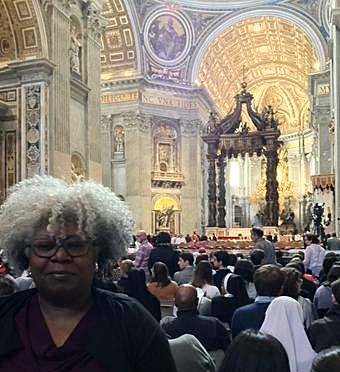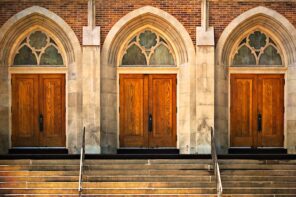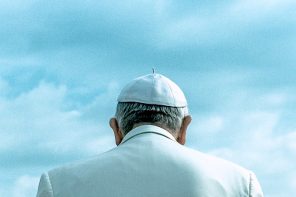Forgive me, for I have sinned to write this article. I cut the line at St. Peter’s for Good Friday’s Liturgy of the Lord’s Passion.
I know, bad professor.
There was no way I wanted to miss writing about the first of three liturgies I’m attending at St. Peter’s this weekend. It was worth it. I sidled my way into the basilica with a group of students who were covering themselves with coats to shield themselves from the Italian sun. The coolness of St. Peter’s Basilica was beckoning, and I did not resist. Inside, a hub of activity: Cantors rehearsing in Latin, and the young Portuguese schoolgirls on a trip to Rome laughing quietly and praying the rosary, charming the usher who pestered them to give up the seats saved for their friends. The charm, of course, worked. The last schoolgirl slid into the cathedral with moments to spare.

RD’s correspondent in Rome, Professor Anthea Butler.
Rome.
Holy Week liturgies, Protestant or Catholic, are big affairs. No exception at the seat of Peter, as cardinals glided by, and hundreds of priests gathered in a small side chapel prior to the mass—although mass is too broad a term. The Good Friday service in Catholicism is not a mass, because there is no eucharistic celebration, rather, it is a commemoration of the Passion and crucifixion of Jesus. It is also the day on the liturgical calendar that the Pope does not deliver the homily. That did not matter to the thousands gathered. Pope Francis, (besides Jesus) was the attraction everyone had come to see. As the procession entered the basilica, it was striking to see how many selfie sticks, iPads, and cameras were lifted in unison as the Pope processed into the basilica. Piety for eager pilgrims to Rome means taking pictures of the very popular Pope Francis, even on the most solemn of Christian holidays.
The liturgy, commemorating the passion and death of Jesus, was highlighted by the homily of the preacher, Father Raniero Cantalamessa, to the Pope. The homily, echoing the phrase ecco homo, “behold the man,” was poignant, given the recent massacre of Christians in Kenya at Garrisa University. Referencing both the beheading of Coptic Christians by ISIS and the Kenya killings, he said: “Christians of course are not the only victims of homicidal violence around the world, but we cannot ignore the fact that in many countries they are the most frequently intended victims.”
From the homily forward, the focus was on the death at the center of Catholic faith, of Mary’s son Jesus. The Pope prostrated himself in prayer, Cardinals came to kiss the cross, and while there were no penitents who walked the steps on their knees to the altar (as in other countries) the solemnity of the service culminated in silence as we walked out from St Peter’s into the cool night.
Later in the evening, the Via Crucis at the Coliseum was held—and again the theme of Christian suffering and murder was highlighted. Persons from Iraq, Syria, Egypt, Nigeria and China—all areas where Christians are persecuted—were represented. During the second station of the Via Crucis, Shahbaz Bhatti, the Pakistani Minister for minorities, martyred in 2011 by a group of armed men, was remembered, and later, the injustice of the death penalty around the world.
I must admit, I have always liked Holy Week. It is a moment to reflect and ponder the meaning of death, and the promise of resurrection. With the recent news out of Kenya of the Garrissa University massacre, and the uptick in sectarian religious violence around the world, everything old is new again. Governments make promises they cannot keep, and zealots will do anything in the name of God. The promise of resurrection for those students who were killed, will be in the memories that live on in their friends and parents.




